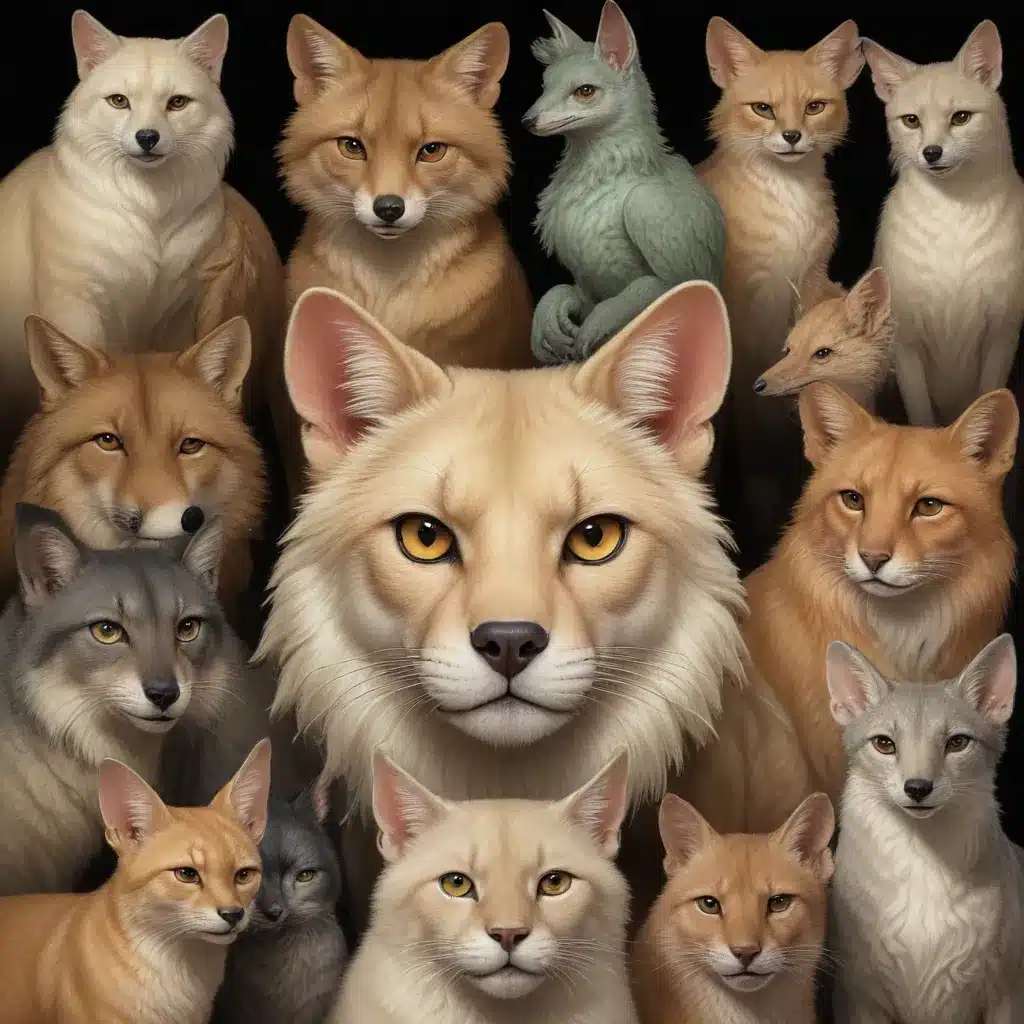
As art instructors at Pencil & Paint Muse, we often encourage our students to seek inspiration from the natural world. After all, the diverse array of creatures inhabiting our planet offer a boundless wellspring of muse-worthy characteristics, from the striking tonal range and chiaroscuro of a lion’s mane to the delicate hatching and impasto textures of a bird’s feathers. By closely observing the unique physical traits and behavioral adaptations of various species, artists can unlock new avenues for expressive pet portraiture and captivating animal-centric illustrations.
Creature Characteristics
When embarking on a new animal-themed artwork, it’s essential to first immerse yourself in the core attributes that define your subject. What distinctive physical features or movement patterns set this creature apart? How do its instincts and social dynamics inform its body language and overall presence? By deeply understanding the essence of your animal muse, you can then translate those intrinsic qualities into a compelling visual narrative.
Take the majestic wolf, for instance. Beyond the iconic silhouette of its lupine form, this apex predator is defined by a keen sensory awareness, a powerful musculature, and a rich tonal range of fur coloration. An artist might accentuate the wolf’s piercing gaze, its sinewy haunches poised for action, or the interplay of light and shadow across its thick coat. Likewise, the graceful swan exemplifies elegance and poise through its swan-like neck, its serene floating posture, and the delicate, almost iridescent hues of its plumage.
Closely observing your animal subject, whether in person, through photographic references, or via online resources, will equip you with the essential building blocks for crafting an authentic, visually captivating depiction. Pay attention to the creature’s unique anatomical features, its modes of locomotion, and the ways it interacts with its environment. This deep understanding will inform your artistic choices, allowing you to move beyond superficial caricatures and toward richly nuanced portrayals.
Artistic Inspiration
Beyond the intrinsic characteristics of your animal muse, there’s a wealth of artistic traditions and cultural symbolism to draw from when conceptualizing your pet portrait or animal-centric illustration. From the anthropomorphic designs of classic fairy tales to the totemic significance of predatory beasts in indigenous mythology, the animal kingdom has long served as a wellspring of creative inspiration.
One particularly evocative example is the mythical griffin, a hybrid creature with the body, tail, and back legs of a lion combined with the head, wings, and front talons of an eagle. This fantastical being has captivated the imaginations of artists and storytellers for centuries, symbolizing power, vigilance, and the fusion of earthly and aerial domains. When rendering a griffin, you might emphasize the interplay of feline and avian characteristics, perhaps through a stylized or abstracted approach that distills the essence of this legendary creature.
Likewise, the domestic cat has been imbued with a vast array of symbolic associations, from the graceful elegance of the Egyptian goddess Bastet to the mischievous, independent spirit of the Japanese maneki-neko good luck charm. Tapping into these rich cultural contexts can lend depth and resonance to your feline-themed artwork, whether you choose to embrace the mystical, the whimsical, or the everyday charm of our feline companions.
Illustrative Techniques
Once you’ve thoroughly immersed yourself in the unique traits and artistic archetypes of your animal muse, it’s time to translate those inspirations into dynamic visual compositions. Whether working in traditional media or exploring the boundless possibilities of digital painting, the key is to cultivate a mastery of the essential techniques that will bring your creature to life.
For those drawn to the tactile pleasures of watercolor, the fluid, transparent nature of the medium lends itself beautifully to capturing the soft, feathery textures of birds or the luminous, iridescent sheen of fish scales. Meanwhile, oil painting offers the opportunity to build up rich, impasto brushstrokes that evoke the rugged, weathered pelts of mammals. And for those who prefer the precision of colored pencils, the nuanced layering and burnishing techniques allow for meticulous hatching and rendering of intricate details.
Of course, the digital realm has also revolutionized the ways in which artists can breathe life into their animal muses. Tablet-based painting applications provide the freedom to experiment with a vast array of brushes, textures, and blending modes, while 3D modeling software enables the construction of dynamic, volumetric forms that can be viewed from any angle. By seamlessly integrating traditional and digital methods, today’s pet portrait and animal illustrators can achieve an unparalleled level of realism and expressive flair.
Iconic Animal Archetypes
Throughout the history of art and literature, certain animal archetypes have emerged as enduring sources of fascination and symbolism. From the majestic grace of the lion to the playful, mischievous spirit of the cat, these iconic creatures have captivated the human imagination for millennia, serving as vehicles for everything from mythological narratives to allegories of human nature.
For those seeking to tap into the timeless appeal of the animal kingdom, consider exploring the visual and conceptual resonance of these celebrated archetypes. The regal, leonine predator might embody themes of power, leadership, and the raw forces of nature, while the domestic companion could evoke notions of loyalty, comfort, and the intimate bonds between humans and their animal friends.
Alternatively, the realm of mythical creatures offers a boundless canvas for artistic expression, whether you’re conjuring up a fearsome dragon, a whimsical unicorn, or a mysterious griffin. By blending realistic anatomical elements with fantastical flourishes, you can craft visually striking compositions that speak to the enduring human fascination with the natural world and its most wondrous inhabitants.
Ultimately, the act of illustrating the animal kingdom is a profound act of both observation and imagination. By immersing ourselves in the unique characteristics and symbolic resonance of our creature muses, we unlock new avenues for creative expression, crafting visually captivating artworks that celebrate the inherent beauty and wonder of the natural world. So embrace your inner animal enthusiast, and let your artistic vision take flight!